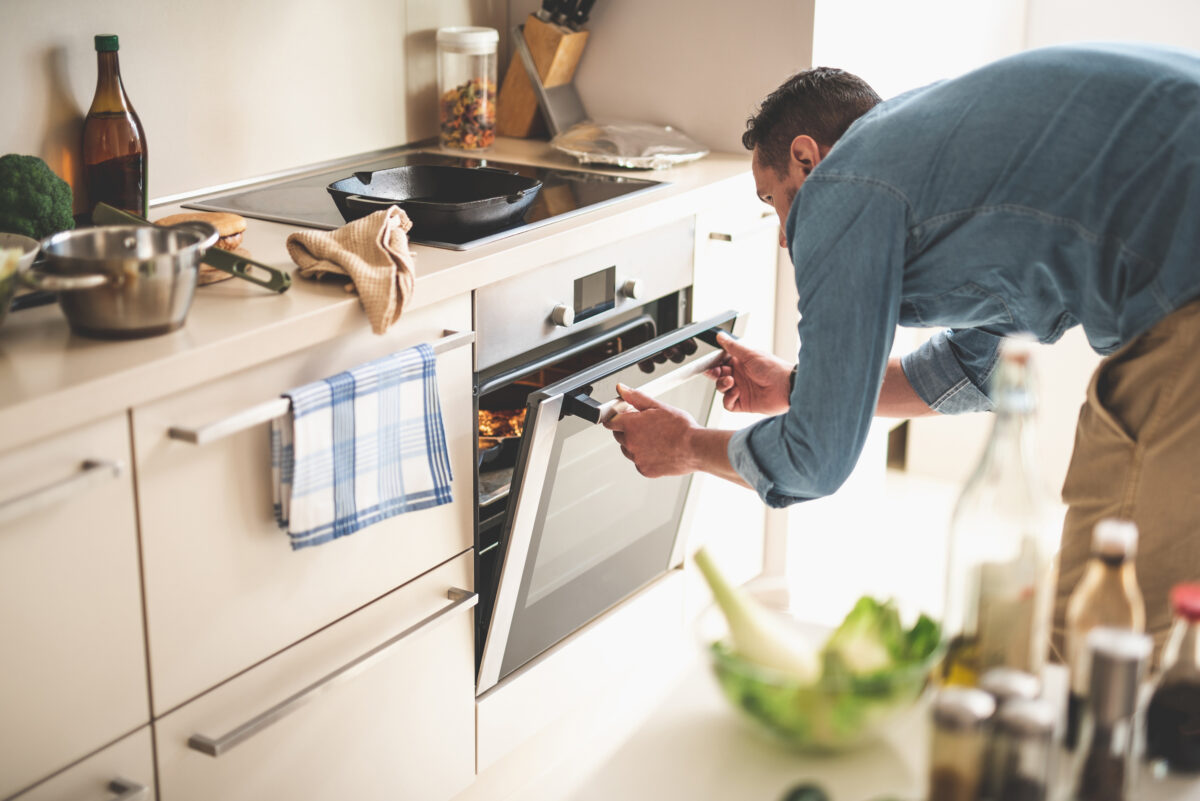Nothing beats a home-cooked meal, a problem with your oven can ruin even the best dinner plans. Your oven is among one of the most important appliances in your home. We’ll show you the most common problems and oven troubleshooting tips for fixing them, plus signs it’s time to call a professional.
1. Your oven won’t heat correctly.
If your oven isn’t heating evenly or heating at all, the problem could be your temperature sensor. It may seem obvious, but if an oven doesn’t heat at the correct temperature, it could be costly or even dangerous. Food may undercook or you could unwittingly start a fire.
An ohmmeter detects electric currents and can be used to test the temperature sensor to make sure that it is working properly. If the ohmmeter isn’t getting a good reading, then the sensor may need to be replaced.
If your temperature sensor is working, then the problem could be with the igniter or heating element. Before performing any repairs, be sure to unplug your oven.
A gas stove will have an igniter, which is located underneath the base plate inside the oven. An igniter can be removed and replaced using a screwdriver.
A heating element, also known as a baking coil, is found in electric ovens. It is found at the bottom of the oven and can also be easily removed and replaced using a screwdriver. Check your owner’s manual if you are making replacements to ensure that you are using the correct parts.
Pro Tip: Can’t find your owner’s manual? Check the manufacturer’s website or try contacting them directly.
2. The interior oven light doesn’t turn on.
The light inside your oven is often similar to any other light bulb in your home. Luckily, that makes this an easy repair you can most likely handle on your own. Just remove the light bulb cover inside your oven. Usually, this requires turning it counterclockwise.
Remove the old bulb and replace it with an identical, new bulb. Be sure to check your owner’s manual if you are unsure of the light bulb type. You may also find this information printed on the bulb itself.
3. The oven door won’t shut.
An oven door that won’t shut is another common issue. Not only is this unsafe, but it also leads to heat leakage. Heat leakage means increased energy costs. Again, it’s best to unplug it and turn off the gas if you have a gas oven and range.
Oven doors can usually be removed by pulling up on the door, but you may have to remove some screws depending on the model. Again, your owner’s manual is your best guide.
You should check your hinges and replace any that need replacing. Also, look for broken door springs. These can be replaced by removing the old ones with pliers and wrapping new springs around the bolts that hold them in place.
If your hinges and springs are in good working order, the door sensor may need to be replaced. Consult a professional if you suspect there’s an issue with the door sensor.
4. The self-clean function doesn’t work.
Double check your oven’s owner’s manual to ensure that you’ve started the self-cleaning procedure correctly. Each brand is slightly different, and timers and knobs need to be set in the right positions.
Note that bigger spills or messes may be too much for self-cleaning to handle. These will need to be cleaned manually to get your oven spick and span.
As always, if you’ve done everything properly but the self-cleaning cycle still isn’t working, it’s best to call a professional. The right home warranty plan can help to cover appliance repair costs and put you in touch with the right service person for the job.
Don’t have a home warranty? Consider protecting your investment today!
5. The oven control board isn’t working.
A reset should be the first step when you encounter a problem with your oven control board. The steps here are pretty simple:
- Unplug your oven from the wall outlet.
- Wait about one minute.
- Plug your oven back in.
This should clear the control board of any errors.
If resetting the control panel doesn’t work, you can try to access the control board. Again, make sure to unplug the oven first.
Next, use a screwdriver to loosen the screws holding the control panel in place. An ohmmeter will help you measure the electrical output of the panel to make sure that it is functioning properly.
If there is an issue, you may need to replace the control board. If you are uncomfortable with this kind of teardown and repair work, seek the help of a professional.
Protect your oven with a home warranty.
With the proper care, most ovens will last 15 to 20 years. While there are many common oven problems you can solve on your own, others may require expert help. Of course, an oven repair costs significantly more if you don’t have home warranty coverage.
For a typical oven repair, HomeAdvisor estimates homeowners can expect to pay an average of $220.
While it depends on the type of repair, less involved fixes can fall as low as $100, while more elaborate issues on higher-end appliances can shoot upwards of $1,000. Labor costs and prices for replacement parts can also vary. Any way you cut it, that’s not nothing.
Save time and avoid expensive repair costs with a home warranty that can protect not only your oven, but most of your home appliances and systems.
Get a quote today and find the right plan to defend your home and wallet against these unexpected costs and expenses.

